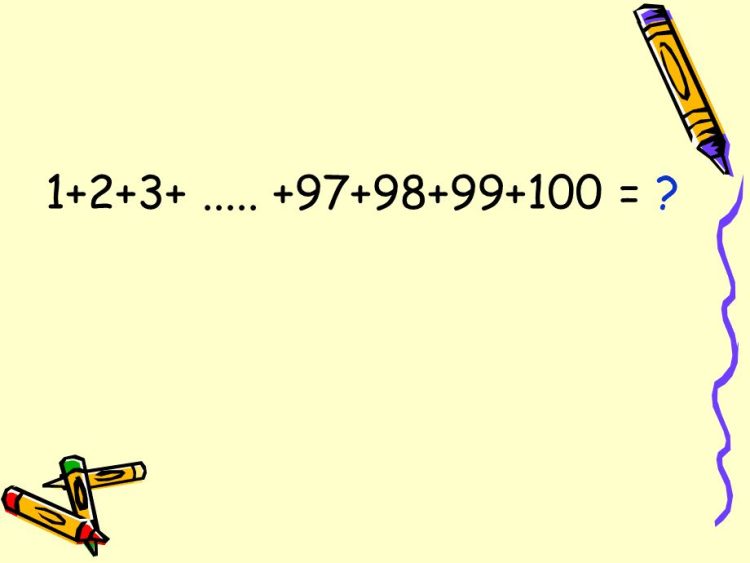
The Stories of Little Carl
Year 1784, Town of Braunschweig, Germany.
It was a hot day. In the town’s elementary school, a hundred or so 7-year-olds were studying in the first grade classroom. It was a typical-sized class of that age. When I say studying, they were reading, talking and mostly making noises. The teacher became impatient while trying to keep the class in order. So he decided to take a different approach. He told the class he would leave them a math problem. They could go outside to play only after they finished the problem.
So he turned to the blackboard, and wrote down:
1+2+3+4+5+…….+96+97+98+99+100=?
The teacher wanted to give the little noise-makers a difficult problem for their age to keep them quiet for at least some time. He was satisfied to see the children lower their heads and start to perform the calculations by hand. But then,
One boy raised his hand right away: “I know the answer.”
The teacher thought this was just a typical boy’s behavior when he didn’t know the answer. “Right. what’s your answer, Smarty?”
“5050.”
The teacher was very surprised. He still did not believe the boy got the answer so quickly by himself. “Are you sure you are right? How did you get the answer?”.
“If you add the first number 1 and the last number 100, that is 101. Add the second number 2 and the second last number 99, it’s 101 too.”
1 + 100 = 101
2+ 99 = 101
3 + 98 = 101
“There are 100 numbers, so there are 50 pairs. 50 pairs of 101 is 5050.” Said the boy.
The teacher could not hold back his surprise, “What’s your name son?”
“Carl Friedrich Gauss.”
Carl Friedrich Gauss later became one of the greatest mathematicians in history. Many mathematical and physics formulas are named after him. He is sometimes referred to as the Prince of Mathematics.
Another really interesting story about Gauss is that he solved the puzzle of his own birthdate. According to wikipedia, Gauss was born to poor parents. His mother was illiterate and did not record his birthdate. She remembered it was a Wednesday and eight days before the Feast of the Ascension (39 days after Easter). Note Easter is celebrated on the first Sunday after the first full moon after the March equinox. Now do you see the little puzzle here? Gauss solved this by his own calculation.
After I told the stories of Gauss to my son, he was certainly fascinated. So I left him a follow-up question: what’s the answer for 1+2+3+ … + 201?